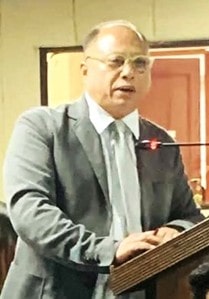
FOR the nth time, no agency was able to effectively solve the alleged fish cartel operating and controlling fish prices in the province and this time around it is being exposed again.
“It has come to our attention, based on conversations with vendors and fisher folks, that there may be an unregulated system — or what many believe to be a cartel, operating behind the scenes. This group of stockholders or middlemen has been dictating fish prices, resulting in rates that are unjustified and unaffordable to our people,” provincial Board Member Nathaniel Binlod said in his privilege speech.
He pointed out, “Fish, which should be an affordable and accessible food for every Boholano, has now become significantly costly for the average Boholano consumer.”
Earlier, Catigbian mayor-elect Benjie Oliva, former officer of the Department of Agriculture under then Secretary Alcala once said that based on its study, Bohol fish prices appeared to be controlled by alleged cartel.
The have been attempts by previous administrations to make fish prices in the province stable, but to no avail.
As this developed, Binlod thus proposed on first reading: “An Ordinance Establishing a Sustainable Fish Trade System through a Provincial Buy-Back and Direct-to-Market Program with Price Regulation for Consumer Protection in the Province of Bohol.”
The legislative measure aims to organize and support all municipal fisherfolk associations; implement a Buy-Back Program with support from the Provincial Government to buy fish directly from fisherfolk at fair, stable prices; and set up LGU-supervised fish stalls or distribution points in public markets to ensure reasonable prices for consumers.
It also targets to create a Fish Price Monitoring Task Force to regularly review and publish fair market prices; and to craft stricter price stabilization provisions to prevent monopolistic practices.
“Our intention is not to cripple legitimate business, but to stop the abuse of power that hurts both ends of the trade — the producers and the consumers,” he emphasized. (rvo)


